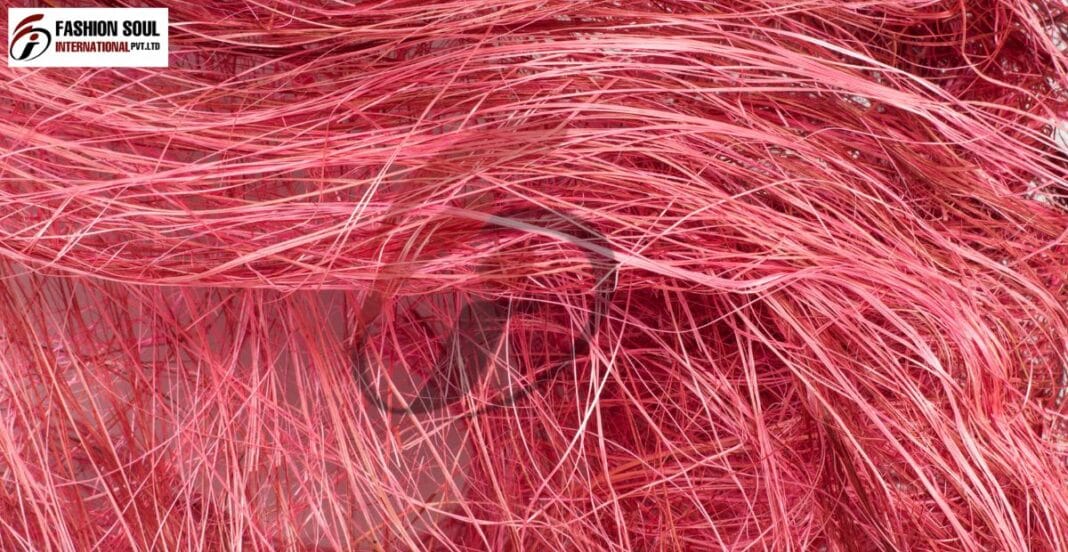The fashion industry continues to undergo profound change alongside sustainability shifts happening in the rest of the world. One of the most exciting new innovations is the increased adoption of eco-friendly functions, such as fiber clothes. Emphasizing sustainability, these fabrics are transforming the world of fashion by solving some of its critical challenges relating to waste and pollution. We will explore how fiber clothes are innovating sustainable fashion and examine their use cases in the industry.
Understanding Fiber Clothes: What Are They?
Fiber clothes are defined as garments crafted from one or more natural and/or synthetic fibers. As building blocks of fabric, these garments determine a piece of clothing’s texture, durability, and overall feel. Traditional fabrics such as cotton, wool, and linen have been around for centuries. However, more sustainable, biodegradable, and recyclable options have emerged in the form of bamboo fiber, hemp, and recycled polyester.
With increasing awareness of the socio-environmental impact of fast fashion, both consumers and brands are prioritizing sustainability. Fiber clothes serve as a cost-effective solution to eco-friendly apparel and guarantee comfort without compromising the environment.
The Rise of Sustainable Fiber Clothes In Fashion
Sustainable fashion is one of the most discussed subjects within the past few years. With most fashion enthusiasts becoming more conscious of the environmental impacts of clothing production, alternatives are now being sought by both the production houses and the fashion consumers. The good thing is that fiber clothes have been brought into the spotlight and provide an option for eco-friendly clothing without compromising on fashion.
What constitutes fiber clothes key selling features is the production methods that are used to manufacture these clothes. A good number of these fabrics are grown and produced using lower pesticides, lower water, and lower energy consumption. In addition, Tencel and organic cotton, both sustainable fabrics, are able to decompose and therefore do not add on to the landfills waste problem.
Key Benefits of Fiber Clothes in Sustainable Fashion
The advantages of fiber clothes have been discussed and analyzed within the fashion consumer perspective. These clothes do not only assist in the reduction of fashion industry emissions but also, have added advantages to the consumers.
1. Eco-Friendly Production Process
The manufacturing of clothes made of fibers is arguably gentler, as it uses fewer pesticides and chemicals, especially those made from organic and natural fibers. Additionally, bamboo and hemp are far more water efficient as crops compared to traditional cotton, and organic cotton alone uses 91% less water than conventional cotton farming.
2. Durability and Longevity
In regard to fiber clothes, natural fibers such as wool, hemp, and bamboo guarantee enhanced durability. Fiber clothes made from those materials will not only stand to wear and tear, but are also lasting enough to reduce fast-fashion.
3. Biodegradability
Natural fibers such as linen, hemp, and organic cotton are all fiber clothes that are more readily bio degradable than synthetic equivalents. This means they will reduce the total textile waste piling up in landfills, as they break down within a much shorter time frame.
Environmental Considerations Regarding Fiber Clothes
Understanding the implications of fiber clothes on the environment is essential, especially with their emerging popularity. An increase in the demand for fiber clothe raises the question of their environmental impact. Traditional synthetic fabrics, such as polyester and nylon, are made from petrochemicals, which are both energy-intensive and environmentally harmful. On the other hand, fiber clothe made from natural sources are much more eco-friendly.Fiber clothe made from natural sources are more eco-friendly. Hemp and bamboo fibers are easier to cultivate, and some fibers, such as recycled polyester, aid in the conversion of plastic waste into useful products. In addition, the dyeing processes for fiber clothe are becoming more eco-friendly, which is a positive step in reducing the environmental impact of fabric production.
Popular Types of Fiber Clothes in Sustainable Fashion
Different types of fiber clothe put to use in sustainable fashion differ widely in their nature and characteristics. Not all fibers are created equal. There are a variety of fibers, each with unique characteristics1 to make it suitable for a specific garment. Here are some of the more popular fibers incorporated into fiber clothe today.
1. Hemp Fiber Clothes
Hemp holds the prestige of being one of the earliest cultivated fibers. Hemp-based fiber clothe are durable and easy to grow as they require minimal water and pest control. Moreover, the agro-industry of hemp consumes very little resources as its fibers are moisture absorbent. Because of these benefits, an increasing number of eco-aware fashion industries are turning to hemp.
2. Bamboo Fiber Clothes
Bamboo revolutionized fiber clothe and the sustainable fashion industry as a whole. Farmers can grow it effortlessly and it consumes minimal water. Moreover, fertilizers and pesticides are unnecessary. Fabrics made out of bamboo fibers are the ideal eco-friendly materials for the garments industry since they are naturally antibacterial. Because of its naturally soft, breathable, and biodegradable nature, bamboo fiber clothe are also wonderful for socks, activewear and undergarments.
3. Organic Cotton Fiber Clothes
Organic cotton is a sustainable substitute to conventional cotton and it’s gaining traction. Cotton, unlike other crops, is naturally protected from diseases, and it is grown without the use of synthetic fertilizers and pesticides, making vegan and eco-friendly. Organic cotton fiber clothe are warm and soft, making them very comfortable and ideal to wear casually.
4. Clothing Made of Recycled Polyester Fiber
Recycled polyester garments, which are produced from used plastic bottles, are a perfect example of defragmentation of plastic. Fiber clothe produced from recycled polyester mitigated pollution by reusing materials that would have otherwise contributed to the landfill. In addition, the durability and performance of recycled polyester garments are identical to those of virgin polyester fabrics, making them ideal for outdoor wear and active clothing.
The Future of Fiber Clothes: What’s Next?
The outlook for fiber clothe appears to be really good. Sustainability concerns in fast fashion have led to innovations in the production of fibers. Some researchers have explored materials such as algae-based fibers which are both biodegradable and have a low adverse environmental impact. Moreover, with the advancement of technologies, fiber recycling will become increasingly streamlined, making sustainable practices easier to implement.Fashion labels are working with scientists and engineers to combine the best qualities of natural fibers with the high-performance attributes of synthetic fibers. Such fiber clothe will be incredibly affordable, making sustainable fashion achievable for all, while helping preserve the environment with eco-conscious materials.
What to Consider When Adding Fiber Clothes to Your Wardrobe
If you are interested in sustainable fashion, one practical step to take would be to incorporate fiber clothe into your wardrobe. To assist you in the transition, here are some practical tips.
1. Start with Basics
T-shirts, socks, jeans, and other wardrobe staples crafted from organic cotton or bamboo are excellent starting points. These garments are relatively simple to integrate into your daily routine.
2. Invest in High-Quality, Durable Pieces
Seek out fiber clothe for frequent wear, like sweaters, dresses, or jackets crafted from sturdy materials like hemp or wool. Although these pieces might be pricier than other fast fashion clothes, the durability will ensure you get your money’s worth.
3. Mix and Match with Conventional Fabrics
If you are not ready for the full switch to fiber clothe, you can try infusing sustainable fabrics into your existing outfits. For instance, wear denim jeans with a bamboo fiber shirt or drape your usual attire with a hemp sweater.


